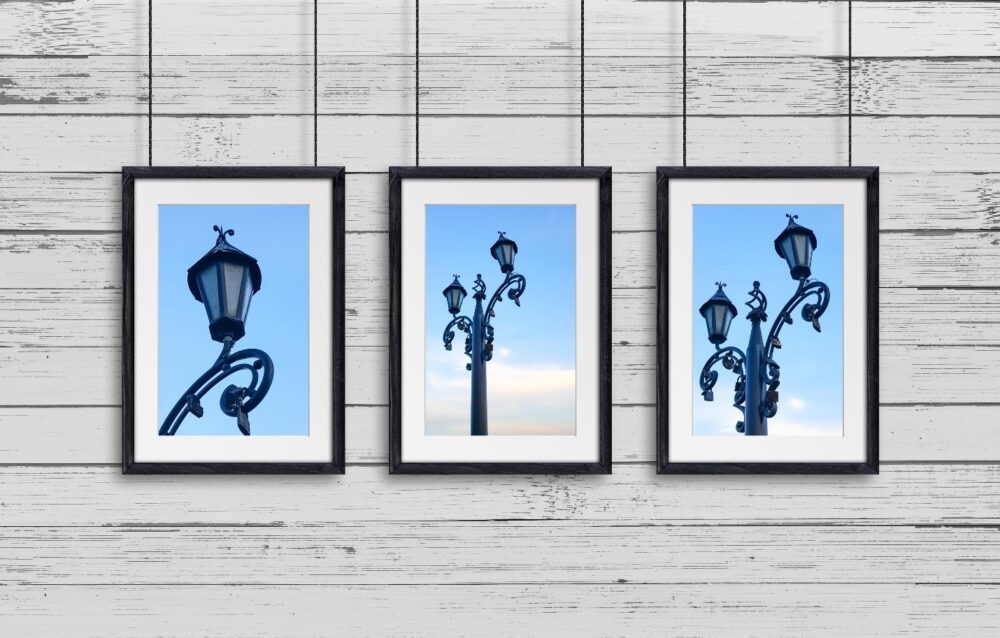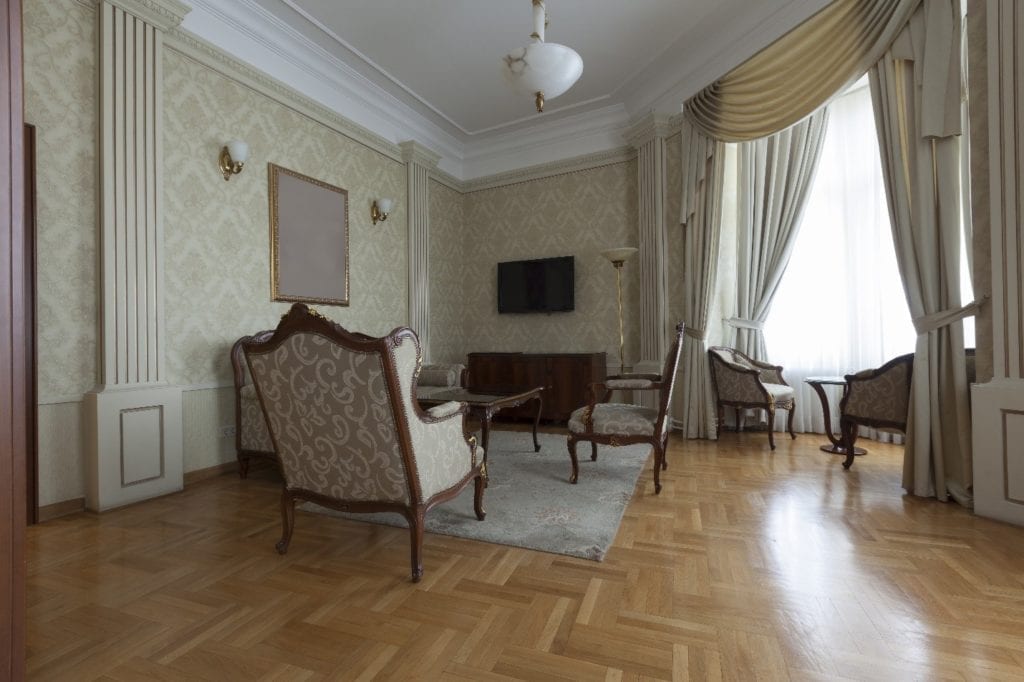Get a Vintage Touch with Picture Rail

Ah, the modern “gallery wall”—a jumble of photos and artwork clustered together in mass groupings that can add visual interest to blank walls. Pinterest loves this look, and you may too…for now.

They’re also massively damaging to walls, as each small frame requires putting at least one nail hole into your wall surface—and that means changing out pictures in the gallery or rearranging your room requires time-consuming patching and painting work.
Luckily, there’s a great way to achieve a clean, sophisticated artwork display in your home that’s friendlier to your walls and your busy schedule (no patching and painting needed to swap out your framed pieces!)—picture rail moulding.
Today’s post gives you what you need to know about this functional—and beautiful—moulding option.
What is Picture Rail Moulding?
Back when most interior walls in even modest homes were made from plaster instead of sheetrock or drywall (because these modern building materials had either not yet been invented or weren’t in common residential use), hanging artwork on walls was a risky proposition. Breaking out the hammer and nails to hang a picture could result in severe wall damage.
Plaster is a brittle material, and unlike modern drywall, it’s attached to a backing (often wood slats called lath) that it can easily separate from and literally crumble off the wall in large chunks! Also, because of this setup, it’s not very supportive—hanging almost anything directly on a plaster wall requires proper anchoring with special hardware and careful technique. Things heavier than very small framed pieces often should not be hung at all—yet everyone still likes to display pictures and other mementos.

Take a look around and see if your vintage home still has some picture rail hanging around that you can begin using! If not, we can consult on adding new rails to old walls.
What is the Correct Height to Install Picture Rail?
If you have existing picture rail moulding in any of your home’s rooms, you’ll find it nailed anywhere from about a half inch to one full foot below the ceiling. Builder or homeowner preference dictated where it was placed, and that often related to the height of the walls themselves.
If you’re installing new picture rail for the first time, you’ll want to follow the 1”-12” below the ceiling guideline, but you can also break with tradition if you have very tall walls or particularly ornate crown moulding that you need some visual separation from. The presence of panel mold and any door and window casings may affect placement, too.
In the end, you want your picture rail to be convenient to hang artwork from, so if you have it mounted too high, you may not want to bother dragging a ladder out every time you want to add a new piece.
Using and Decorating with Picture Rail
Of course, once you have pictures or other decorations suspended from your picture rail with appropriate picture wire or cords, rearranging and swapping out artwork should be as easy as unclipping or unhooking the suspension system from one item and refastening to hardware on the new item. Because artwork should be hung at eye level, you shouldn’t have to climb a ladder to accomplish these rearrangements. (Of course, adding new pieces will involve mounting suspension wires to your rails, as mentioned above.)
A few other decorative points you’ll want to consider with your picture rail include:
- Painting picture rail moulding to match your crown moulding and other trim will help it blend in. This matching technique is traditional and gives the most sophisticated look.
- You can also paint picture rail moulding to match your walls. Especially in more modern homes that may not have ornate crown moulding, matching any trim to your wall color will lend a sleeker overall look that puts focus on the artwork displayed.
- Just because you install picture rail, it does not mean you must use it. In newer homes constructed with drywall, picture rail isn’t necessary to preserve the structural integrity of your walls. Don’t feel guilty if you just like the look and don’t plan to use it for its functional purpose!
Looking for Picture Rail or Other Decorative Mouldings for Your Unique California Home?
If you’re building a new home—or undertaking a remodeling project on a current home to better match your style preferences—The Moulding Company is California’s best resource for all of the trim, moulding, sheet stock, closet materials and more to finish with style.
Stop by one of our conveniently located showroom locations in Concord, Santa Clara, or Millbrae today, or get in touch through our website to find out how we can help you get a new look you’ll love for your home.

